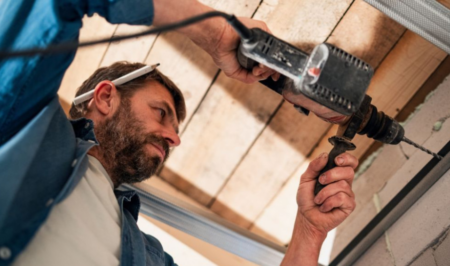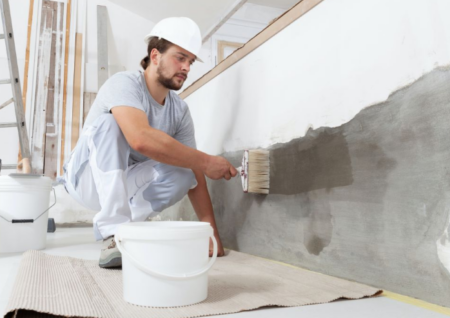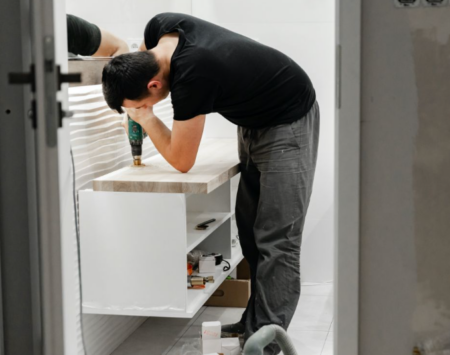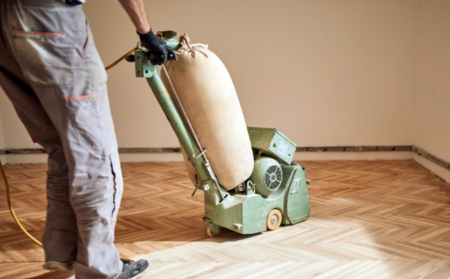Discover the art of interior finishing work and transform your space into a work of art. Discover the art of interior finishing work and learn how to transform your space into a masterpiece. Enhance the aesthetics and functionality of your home or office with professional interior finishing techniques.
Interior Finishing Work For Rooms, Office And Building; All Types You Must Know.

It is impossible to make high-quality repairs, heat and sound insulation without finishing work. Finishing the premises is one of the most important stages. How to do it – call a repair team or you can do it yourself, they explained in the article.
Finishing work is the final stage, without which no high-quality repair can be completed. At this stage, wallpaper is glued, surfaces are plastered and painted. In the article we talked about the types of finishing work, what is included in the finishing of premises and what nuances are important to take into account.
Why finishing work is needed
Finishing work completes the renovation and gives the room a presentable appearance. The goals of this work can be divided into two large groups:
- aesthetic – improve the appearance of the room;
- protective – there are special materials that protect surfaces from environmental influences, corrosion and rotting.
Different types of finishing work are carried out both inside and outside the premises.
Exterior finishing work
When finishing is done outside the room, special attention is paid to protecting surfaces from natural factors. At this stage, panels are installed, walls are plastered, the house is tiled and finishing material is applied.
Each type has both pros and cons. For example, plaster is a budget option that involves the use of a special solution with synthetic additives. They make the finishing consumable resistant to moisture and temperature changes. However, with plaster it is quite problematic to achieve perfectly smooth walls. Any cracks or damage will be noticeable.
At the same time, finishing panels provide reliable protection without requiring pre-treatment.
Types of interior finishing work
Interior work is aimed at thermal protection, sound insulation and complete preparation of rooms for subsequent use for residential or commercial purposes. When carrying out this type of work, you should take care of safety: use only environmentally friendly and harmless materials that have the necessary certificates.
It is worth considering that interior decoration is carried out on a top-down basis. That is, the renovation starts from the ceiling and ends with the floor. Let’s take a closer look at internal types of finishing work.

Rough construction and finishing work
Before starting repairs, rough finishing is carried out – that is, something that ensures high-quality preparation of the premises and communications. It allows you to make changes to the layout and simplify the further preparation of the room for decoration. Otherwise, for example, you will have to level the surface of the walls right before wallpapering or painting.
Before starting rough finishing, you need to remove all furniture and other objects that interfere with the work from your apartment or house. The creation of free space is determined by the type of repair. Capital requires the complete vacancy of premises. When redecorating, you can get by by moving things to adjacent rooms.
Rough finishing involves the following types of work:
- Plastering. Needed to eliminate irregularities and defects exceeding 5 mm. Before work, the walls are pre-prepared and only then leveled.
- Masonry. Assembly and installation of partitions, fireplaces from different types of materials.
- Plasterboard. Niches, slopes, and suspended ceilings made of gypsum plasterboard are installed.
- Painting. The surfaces are primed and polished. The final step is applying putty.
- Plumbing. Arrangement of sewer and water supply systems, pipes, preparation of space for bathtubs, toilets, showers, their assembly.
- Electrical installations. The walls are being chipped (that is, channels for communications are created inside them), cables and networks are installed, and places for sockets and switches are prepared.
This also includes glazing. The duration of rough finishing depends on the type of repair and the scope of tasks. Cosmetic changes will take the least amount of time—up to 30–40 days. Designer renovations can last from 90 to 100 days or more.

Surface cladding
The work consists of finishing the planes with special materials. For example, ceramics or wood. Internal cladding work begins after completion of construction.
Before finishing, the surfaces are leveled and dried. There are only two requirements to achieve reliable adhesion of the material to the plane:
- choose the right adhesive solution;
- strictly observe the conditions for lining the selected type of consumable.
For even laying during finishing work, laser levels are used. They allow you to lay the material evenly so that the seams are the same.
The work starts from the ceiling and then moves to the floor. The exception is rooms with high humidity. There the sequence is reversed, because condensation forms.
Electrical installation
An important stage that involves performing a whole range of actions – starting with replacing old wiring and ending with connecting electricity from scratch. This type of work absolutely cannot be skipped, since it affects the uninterrupted and safe use of any equipment connected to the network.
Electrical installation is divided into two stages:
- The first is performed in the early stages of repair. Specialists create a plan for supplying electricity to the building, install wiring and install distribution boxes.
- On the second floor, lighting, sockets, meters are installed, and household appliances are connected.
Finally, commissioning work is carried out, that is, setting up and testing relay protection mechanisms. To properly distribute power and calculate the load on the network, it will be safer to use the services of professional experts.
Wallpapering
Before hanging wallpaper, you should prepare smooth walls. To do this, you need to get rid of the old wallpaper, fill up the uneven areas and sand the putty layer. The last step is to apply primer to the prepared wall.
After that you need to choose a wallpaper. Among the most popular finishing materials are the following:
- paper: environmentally friendly, cheap and easy to stick, but deteriorates when exposed to moisture and sunlight;
- interlining: non-woven dense material that allows you to hide minor wall defects;
- vinyl: wallpaper adheres well to surfaces, is not susceptible to external factors, but does not allow air to pass through (most often used in kitchens and hallways);
- textiles: fabric wallpaper is durable, does not fade, has thermal insulation qualities, but easily deteriorates in damp and dirty rooms.
Having chosen the type of material and prepared the walls, you can begin to work. It is better to do this starting from the window. To achieve a good result, you should:
- draw a vertical marking and glue the wallpaper strictly along it;
- cut strips with a margin of a couple of centimeters;
- smooth out air bubbles under the canvas using a roller;
- choose high-quality glue suitable for a specific type of wallpaper.
In this case, it is desirable that there are no drafts in the room during work. Otherwise, the wallpaper may not stick well and fall off.
Painting
This is a budget and affordable way to decorate the surfaces of residential premises. There are several types of paint:
- adhesive, for interior work;
- oil, for house facades and metal products;
- enamel, for rough surfaces;
- synthetic – universal paint.
Before painting the surface, it needs to be leveled: remove dirt and apply primer. The painting material is evenly applied in several layers using hand trowels and rollers.
Plumbing work
Some finishing work related to plumbing can be done independently. Others, more time-consuming and painstaking, require the experience of professionals. For example:
- installation and repair of water supply, sewer pipes and faucets;
- assembly, configuration and connection of plumbing products.
You can also add installation of heating systems and water heated floors to the list.

Flooring installation
The final stage of interior finishing is laying the floor. First you need to decide on the type of flooring, since each of them has its own nuances. The most common are:
- Linoleum. A universal roll covering suitable for any interior. Lays on the floor without the slightest unevenness. Retains original quality for a long time.
- Parquet. Time-tested material – made from oak, maple, ash, beech and other wood. Installed on a flat floor, securely fixed with glue and varnished. With prolonged contact with moisture, it tends to swell.
- Laminate. Reliable and durable. Imitates the textures of other materials. It is fixed thanks to the locking parts on the panels.
- Tile. Suitable for places with high humidity and floor load. Usually made from ceramic. Does not require maintenance, can be wet cleaned. Due to its fragility, installation is best left to an experienced technician.
- Carpet. Most often used in children’s rooms or halls due to the fact that it retains heat well and provides comfort. Disadvantage: it fades quickly in the sun.
Recently, decorative self-leveling flooring has become popular. This is a self-leveling mixture that is poured into the room at the finishing stage and creates an even and durable coating with any design: from a matte monochromatic color to a 3D pattern. The technology for laying finishing consumables is quite complex and requires preliminary preparation of the floor.
Finishing construction and finishing works
Finishing work is the final treatment of surfaces and their decorative design. They are performed from top to bottom, namely:
- installation of various types of ceilings (suspended or suspended);
- wall decoration with paint, wallpaper;
- laying tiles;
- floor covering;
- door installation;
- installation of plumbing, lighting fixtures, sockets, switches, air conditioners.
Typically finishing work lasts from 7 to 15 days. However, there is no need to rush: the final result depends on the quality of execution.
Conclusion
Interior finishing work is the key to unlocking the true potential of your space. With careful planning, quality materials, and the help of professionals, you can transform any room into a stunning and functional masterpiece that reflects your style and personality. Don’t settle for a lackluster space – bring your vision to life and experience the joys of a beautifully finished interior.
